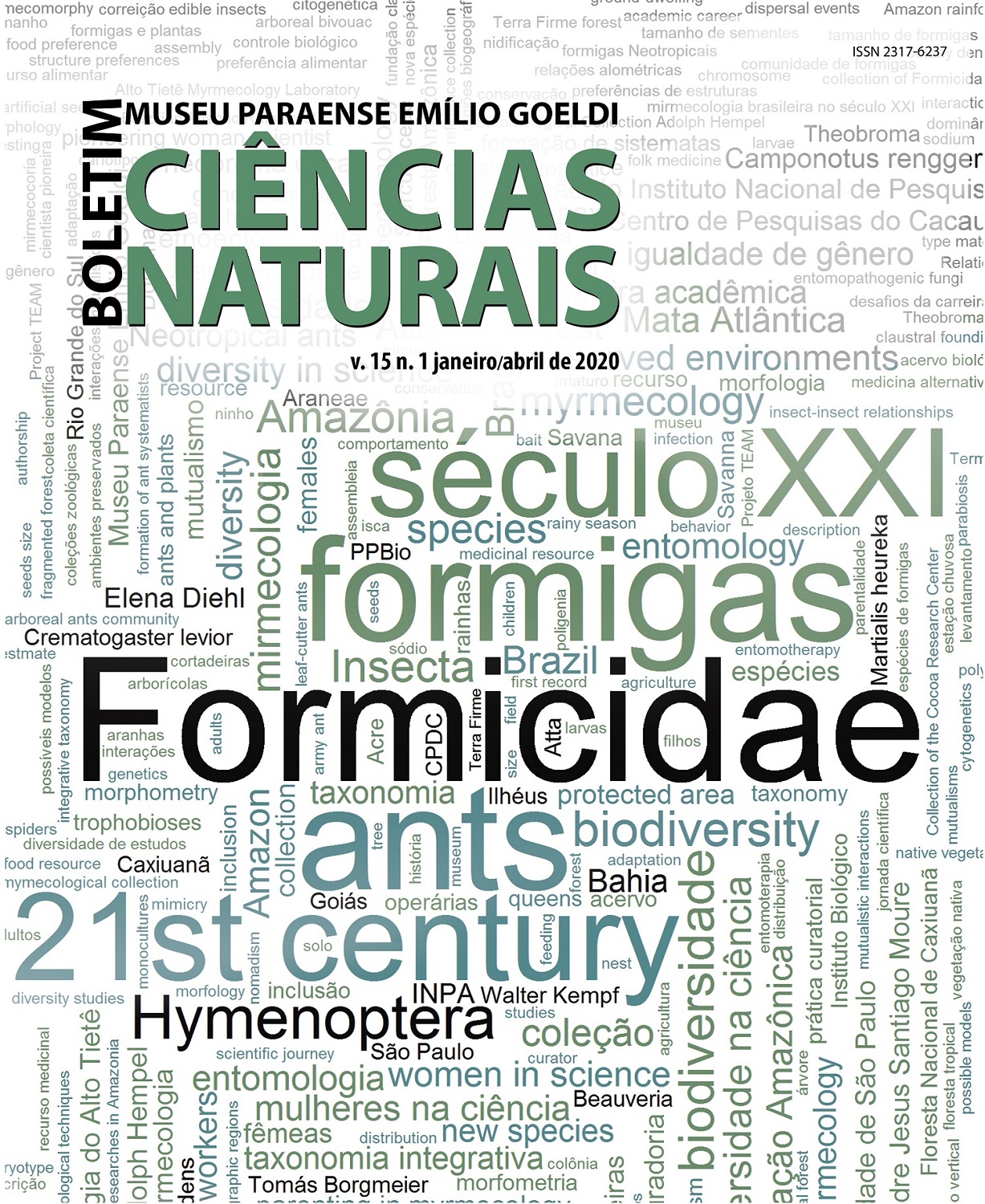Considerations about a series of mimetic spiders from the collection Centro de Pesquisas do Cacau (CPDC), Bahia, and their possible models
DOI:
https://doi.org/10.46357/bcnaturais.v15i1.294Keywords:
Mimicry, Myrmecomorphy., Adaptation, Araneae, FormicidaeAbstract
Mimicry is a phenomenon in which one species exhibits morphological characteristics that convergently resemble an unrelated species with a selective advantage. Studying mimetic animals and their models can help in understanding the ecological and evolutionary relationships in a complex community. We compared spiders mimetic of ants with their probable models. The similarity between mimetic species and model ants was defined based on morphological criteria. We analyzed 104 mimetic spiders (11 genera in four families). The commonest model ants belong to the Ponerinae subfamily, which are aggressive predatory ants that actively exploit all strata of forests and agroforests. Model ants of the genus Pseudomyrmex show similar characteristics. The others belong to the genera Cephalotes, Camponotus, Crematogaster or Dolichoderus that tolerate other animals in the surroundings of their nest, and the army ants Eciton, nomadic, aggressive and populous. The most frequently imitated features are constrictions, color patterns or hairs on cephalothorax, and body elongation, which confuse the observer with the three tagma of the model ant. There is rarely an exact overlap between the morphological details of the model and the mimetic. The morphology of myrmecophilous spiders suggests more the features of a genus/group of ants than a single model species.
Downloads
Published
Issue
Section
License
Publication means fully assigning and transferring all copyrights of the manuscript to the journal. The Liability Statement and
Assignment of Copyrights will be enclosed with the notice of acceptance. All the authors must sign the document and return it to the journal.








